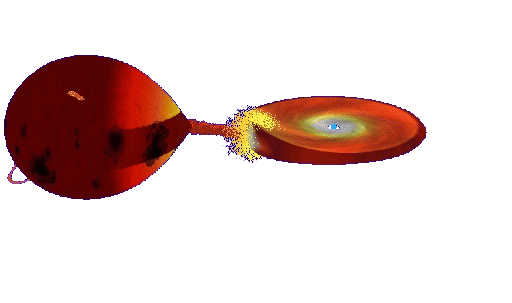
Astronomy 1001
Exploring the Universe
Sec. 2, Fall Semester 2013
MASTER page:

 |
Astronomy 1001 Exploring the Universe Sec. 2, Fall Semester 2013 MASTER page: |

|
|
|
|
 Professor L.L.R. Williams, 353 Physics, 624-1084 http://astro.umn.edu/~llrw
Professor L.L.R. Williams, 353 Physics, 624-1084 http://astro.umn.edu/~llrw
llrw (AT) astro.umn.edu, Office Hours: 11am-12noon MW, or by appointment, or just drop by!
Section 2: Lecture - 10:10-11:00am MWF, in Physics 166
TA Office Hours - in Physics 451 - Hours are posted on the Astr 1001 course website and the door outside the Lab rooms, Phys 450 (4th floor South side) and Phys B49 (basement)
Please read the entire syllabus carefully; you are responsible for all of the requirements and procedures described here. You are also responsible for all announcements, assignments, changes, etc., whether or not you are in class.
AST 1001 satisfies Liberal Education Physical Science w/Lab and the Environmental Theme requirement. The course introduces the students to a wide range of topics, from the Solar System and the cosmos, to the physical principles that underlie the workings of the Universe. The integrated study of the physical principles and the systems they apply to allows the students to see Earth in a broader context, and provides them with a unique perspective on our home planet and its environment. A key component of the course is an understanding of how science approaches the physical world around us. Environmental theme topics are addressed in several parts of the course, in both lectures and labs. |
Due Dates |
Exams
Mid-Term 1: Oct 11 (Fri),
during class period. Location: Willey Hall 125 (West Bank)
Mid-Term 2: Nov 15 (Fri)
during class period. Location: Willey Hall 125 (West Bank)
Final: Thursday, December 19,
1:30 p.m.–3:30 p.m. Location: Tate Physics 150
Observational Project
Part I: At least 3 observations entered
ONLINE
and paper photo-copies of Observing Form placed in
your TA's box (outside Phys Rm. 256) by Friday, Sept.
27 at 5 PM
Part II: At least 9 total observations entered
ONLINE
and paper photo-copies of Observing Form placed
in your TA's box by Friday Oct. 25 at 5 PM
Final Report: Final observations (a total of 15) entered
ONLINE
and paper photocopies, and the Final Report
due in your TA's box
by Wed. Nov 27, at 5PM.
 |
Required Texts |
Text: The Essential Cosmic Perspective, Bennett, Donahue, Schneider and Voit (Sixth Edition - includes on-line access).
Lab Manual (required): Astronomy 1001/1001H Laboratory Manual 2013-2014
(available in the Bookstore)
 |
Course Policies and Procedures |
Student Mental Health Services As a student you may experience a range of issues that can cause barriers to learning, such as strained relationships, increased anxiety, alcohol/drug problems, feeling down, difficulty concentrating and/or lack of motivation. These mental health concerns or stressful events may lead to diminished academic performance or reduce a your ability to participate in daily activities. University of Minnesota services are available to assist you with addressing these and other concerns you may be experiencing. You can learn more about the broad range of confidential mental health services available on campus via the Student Mental Health Website at http://www.mentalhealth.umn.edu
Academic Standards - The CLA and CSE scholastic conduct and classroom procedures will be followed. You are responsible for being familiar with these. Students are welcome to work together, exchange ideas, etc. However, for the Moon Project, EACH STUDENT MUST MAKE HIS/HER OWN OBSERVATIONS/MEASUREMENTS AND OWN CALCULATIONS. Copying of someone else's measurements or calculations is equivalent to cheating and will be handled accordingly.
Examinations Room assignments for the exams will be announced in class and posted on the course website. Bring two pencils and a photo-ID to all exams! Exams will consist of multiple choice and short answer questions. In order to take a makeup exam, you must receive permission in writing/email from Prof. Williams PRIOR TO THE EXAM. Make-up exam formats will be at the discretion of the professor, and may be a combination of multiple choice, essay and/or oral questions. Your midterm exams will be returned to you in your lab. If you feel there is a mistake on the multiple choice portion of your exam, please see the administrative assistant in Physics 356.
For the midterms you are allowed to bring one 8.5 x 11” page of notes covered on one side; for the final you are allowed to bring two 8.5 x 11” pages of notes covered on one side. You will not need a calculator for the exams, so calculators are prohibited.
Note: Research and students from previous class shows that using the on-line quizzes provided with your textbook has proven to be a very effective way to prepare for the exams. You can access these online quizzes by logging in to MasteringAstronomy.com and using the access code in the cardboard insert provided with your text. You do not need any special course specific passwords.
Observational Project Information START MAKING OBSERVATIONS RIGHT AWAY! don't miss a clear night/day! Every term there are a few students who put this off. DO NOT BE ONE!! You will need your three preliminary observations by the end of the third or fourth week. Always save the original copy of your observation log, and turn in a photocopy.
| Week | Topic | Chapter Reading (approx.) | Labs and Due Dates |
| Sep 3-6 | A Perspective on Astronomy | (1), 2 | No lab |
| Sep 9-13 | The Science of Astronomy; Understanding Motion | 3, 4 | D |
| Sep 16-20 | Understanding Motion, Energy and Gravity | 4 | A |
| Sep 23-27 | Light and Telescopes | 5 | B, Obs. Project Part I due Friday by 5pm in Rm.256 |
| Sep 30-Oct 4 | Solar system overview | 6 | E |
| Oct 7-11 | Terrestrial Planets; Earth's environment | 7 | L |
| Oct 11 (Fri) | MID-TERM EXAM 1 | Ch. 1-6 | . |
| Oct 14-18 | Jovian Planets; Asteroids and Comets | 8, 9 | M |
| Oct 21-25 | The Sun | 10 | I, Obs. Project Part II due Friday by 5pm in Rm. 256 |
| Oct 28-Nov 1 | Stars and Stellar Properties | 10, 11 | F |
| Nov 4-8 | Star Formation and Stellar Evolution | 12 | H |
| Nov 11-15 | Stellar Graveyard | 13 | K |
| Nov 15 (Fri) | MID-TERM EXAM 2 | Ch. 7-12 | . |
| Nov 18-22 | Stellar Graveyard; Milky Way Galaxy | 13, 14 | J |
| Nov 25-29 | Milky Way, Galaxies and the Expansion of the Universe | 14, 15 | NO LABS, Final Obs. Project due Wednesday by 5pm in Rm.256 |
| Dec 2-6 | Dark Matter, Dark Energy and Cosmology | 16 | G |
| Dec 9-11 | The Big Bang Model, Early Universe, and Inflation | 17 | NO LABS |
| Dec 19 (Thu) 1:30-3:30pm | FINAL EXAM | Partly comprehensive, mostly from the last 4-6 weeks of class | . |
 |
Grading will be assigned approximately as follows based on past experience: A: 900 - 1000; B: 800 - 899; C: 700 - 799; D: 600 - 699; F: 0 - 599 (You must receive a 'C-' or better to receive a grade of 'S'.) Keep copies of all materials upon which you are graded (laboratory reports, observational project assignments, and examinations) until the end of the semester. After the first two or three weeks of the semester, grade summaries will be posted weekly at http://www.astro.umn.edu/courses/1001/. Students are expected to review their grade summaries for accuracy periodically during the semester and after the final examination. Discrepancies should be reported to Terry Thibeault in the Office of the Minnesota Institute for Astrophysics [Room 356 Physics; Phone: 612-624-4811; FAX: 612-626-2029; e-mail: tt (AT) astro.umn.edu]. NOTE! In order to receive a passing grade in the class you must earn at least 50% of the total available lab points (120/240) AND at least 50% of the total available Observational Moon Project points (70/140). In addition, you must take all three exams. |